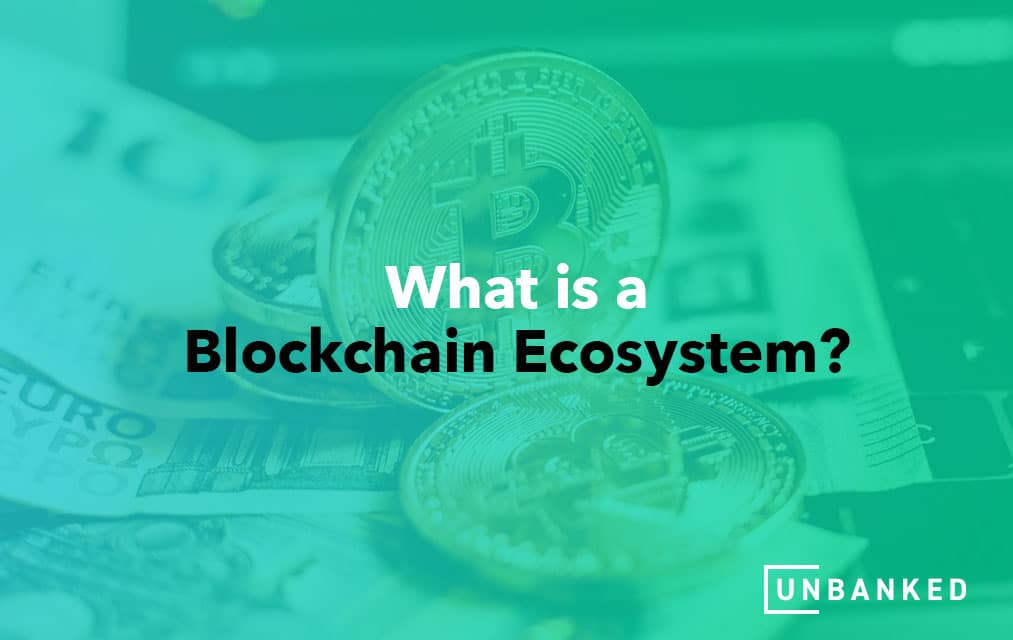Blockchains have grown to be extremely popular ever since cryptocurrencies were created. The technology allows for data to be stored in ways where it’s almost impossible for anyone to hack into it.
Many investors have gotten into the game of blockchains, and most people associate it with cryptocurrency, which has now morphed into several decentralized projects that tap into the power associated with them.
Most of the success of blockchains has come from smart contracts, which are stored within blocks of a blockchain. These types of contracts create a system that automates tasks that were initially done by other software applications.
Today we will dive into the blockchain ecosystem and how it works and compares to others.
So let’s dive in!
Looking to learn more about the basics of Crypto? Check out our Crypto terms every investor should know.
What Is A Blockchain Ecosystem?
In a nutshell, when people talk about a blockchain ecosystem, they are referring to the parts that make up a blockchain network and how these parts interact with each other. The technological portions of these blockchain ecosystems allow the system to do certain functions within that system.
There are several moving parts to these blockchain ecosystems, including data ownership, exit criteria, entry criteria, and individual participation governorship. All of this information is shared with each system’s participants.
Each blockchain ecosystem can be decentralized, transparent, and immutable and provide significant flexibility to its operations.
You will find many overlapping qualities within each blockchain ecosystem, but each one of them is unique in its own kind.
How Does a Blockchain Ecosystem Work?

At its core, a blockchain is simply a database distributed across different blockchain nodes, completely decentralized where no one person or entity controls it.
This distributed data is stored in blocks, which gives way to the name blockchain. Within this ecosystem lies the elements that contribute to the blockchain.
Elements Of a Blockchain Ecosystem
There are several elements that make up a blockchain ecosystem, but some of the features start with the developers, the nodes, the miners, and the stakeholders.
Developers are the participants who construct and constantly update the blockchain network.
Nodes are specific devices that will keep a ledger on the history of the transactions that have taken place.
Miners and validators are the participants that are responsible for all of the transactions that take place.
Finally, stakeholders are the participants who hold the cryptocurrency and plan to use it for transactions or payments.
With the above said, we can dive a little deeper into something called smart contracts. A smart contract is a program that runs on a blockchain and is self-executing in nature. Smart contracts help increase the blockchain abilities by allowing them to add and build new projects.
Examples of projects that can be built in the blockchain ecosystem include decentralized finance (Defi) platforms, non-fungible tokens (NFTs), blockchain video games, and virtual real estate.
Having a large set of projects within a blockchain ecosystem is usually a good sign that the ecosystem is healthy and will be around for a while.
How Does A Blockchain Ecosystem Benefit Organizations?
The most significant advantage to organizations is when they exchange information, it happens at lightning speed. By using smart contracts, it removes processes in the middle that would typically take more time to process.
Everything is held private and with great control for its participants, but at the same time, every participant within the blockchain system can see the information.
This type of data distribution can bring increased functionality to employees and customers within the organization. It can significantly change the way projects are done from start to finish.
Related Links: Bitcoin EFTs: What To Know
Different Types Of Blockchain Ecosystems

There are several blockchain ecosystems in the marketplace, but we are going to look at a few of the biggest ones and compare them to the rest in their class. But first, let’s look at the different ways that blockchain ecosystems can be organized.
Single-Party Led
A perfect example of a single-party-led blockchain project is Bumble Bee Foods. This type of project is led by one organization, where everyone benefits from participating in that network. Bumble Bee Foods worked to create an ecosystem that traces yellowfin tuna from when it’s caught to the dinner table.
In this way, the owners of restaurants who are buying the fish from Bumble Bee Foods have more trust in how fresh their fish is when it’s purchased.
Joint Venture Ecosystem
The main goal of a joint venture ecosystem is to pool resources together from two or more organizations. Although this type of ecosystem is getting more popular, it can be difficult to tell if these newly formed partnerships are true business ventures, new companies, or just coming together for a short time.
Regulatory Blockchain Ecosystem
A regulatory blockchain ecosystem comprises different government agencies that share projects and must follow self-reporting guidelines to be compliant.
The most important thing to all of these ecosystems is where they will get their funds from. Usually, these ecosystems are not included in the typical business funding model. If an organization is considering creating a blockchain ecosystem, it must consider the costs and the handling of the projects within the ecosystem.
Popular Blockchain Ecosystems
Bitcoin
Bitcoin is by far the largest and most significant blockchain ecosystem on the market. Its original purpose was to become a peer-to-peer payment system done electronically. Even though this still holds true, many people hold Bitcoin as a store of value.
The Bitcoin blockchain ecosystem has a very active developer community that primarily focuses on fixing any issues that come up in terms of functionality.
Ethereum
The Ethereum blockchain ecosystem was the first smart contract platform that created a strong developer community and gave it an enormous advantage over its competitor.
Some of the more popular projects that the Ethereum ecosystem has created are the decentralized cryptocurrency exchange called Uniswap, the meme coin Shiba Inu, the lending protocol Aave, and the virtual reality platform called Decentraland.
Related Links: How to Invest In Crypto (Without Buying Cryptocurrency)
Stellar
The Stellar blockchain ecosystem was designed to be a decentralized payment network. The Stellar ecosystem helps giants like IBM when it comes to payment solutions. MoneyGram International is another example and has a crypto-to-cash service that Stellar powers for them.
Stellar is extremely efficient because when transactions are done, it takes only seconds to perform and costs a fraction of a cent. Stellar also works with other types of fiat money.
Need to open a cryptocurrency bank account? Let Unbanked be your solution for holding, exchanging, and receiving crypto funds. Visit our website today.
Summary
As you can tell from this post, there are several options for blockchain ecosystems. When looking to invest in a blockchain project, start first by researching its ecosystem.
For more information on blockchain ecosystems and cryptocurrency, visit Unbanked.com.





